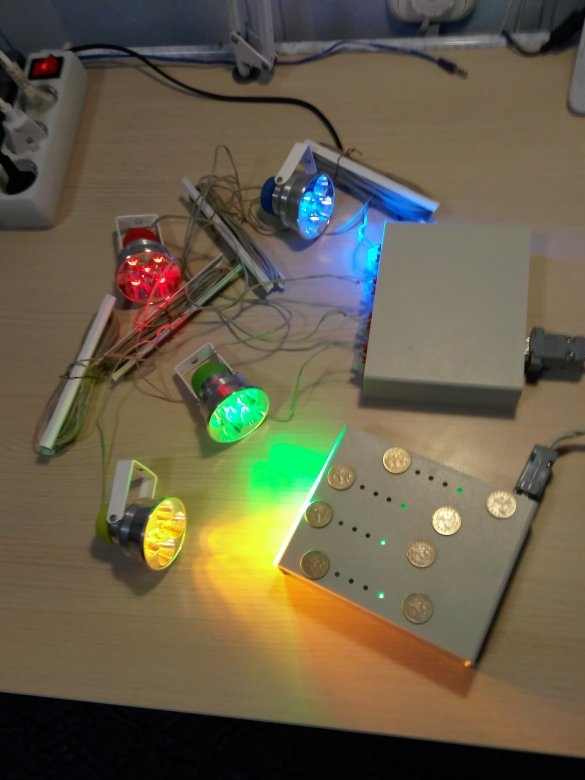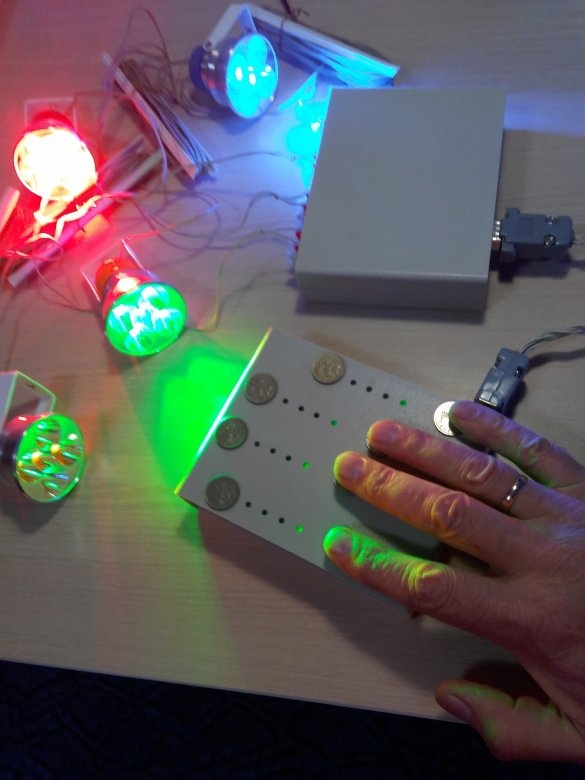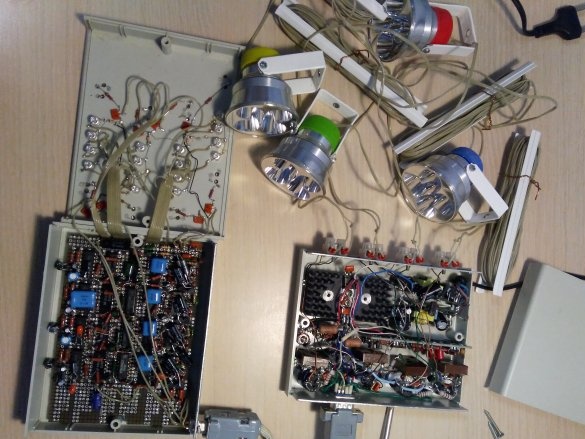The upper sensor of each channel switches the modes:
1.Usual
2. Smooth
3. Stroboscopic
4.Automatic.
Very fast, with such a straightforward homemade, the daughter showed me how she developed a sense of rhythm. The index finger controlled the channel with red, the middle channel with green, the nameless channel with yellow, and the little finger controlled the channel with blue. It turned out very cool and colorful, but you need finger training ....



